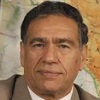2.1: Who are the Salafis/Wahabis?
- Last updated
-
-
Save as PDF
Amongst the Hanbalis, there is a well-known movement called the Salafi movement. One of the most well-known Salafi groups are the wahabis, a movement with its origins in Saudi Arabia. Wahabis are vehemently against tomb worship, and many of the folk practices of Islam that have been tied to Sufism and/or reverence for particular mystics and holy men (often referred to as walis in Arabic). According to Hanbal’s Islamic theology, these practices are seen as a form of idol worship, defined as a partnering of mortal human beings with God. This is fundamentally in contradiction with one of the main tenets of Islam: monotheism, or tawhῑd.
Salaf means ancestors, and the Salafis, or followers of the Salaf, believe that the spiritual and temporal practices of the earliest Muslims and companions of the prophet provide a comprehensive guide for current-day life and government. Muslim intellectuals of the 19th and early 20th century, grappling with the prospect of modernization and Westernization, saw much potential in this approach because of the universal principles contained in the Qur’an, the prophet’s words and the way he and his companions conducted themselves. The ideal was that they would find a way to adopt Western technology and institutions while applying Islamic concepts to how they would be adopted. As the movement progressed, however, it became more of a fundamentalist movement, and currently one hears about Salafis in the news primarily in connection to radicalization.
1. The diversity of Middle Eastern identities in relation to religion are threefold:
• the Middle East is diverse in regard to multiple religious groups.
• Middle Eastern diaspora communities worldwide reflect a much different demographic make-up than in the Middle East, with a larger percentage of non-Muslims.
• Muslim-majority countries worldwide are very diverse, containing major world regions outside of the Middle East.
1. The Abrahamic faiths of Judaism, Christianity and Islam have been hugely influential, but share commonalities and differences.
2. The Abrahamic Faiths are not the only religions of cultural significance, and at the same time there is much diversity within them.


